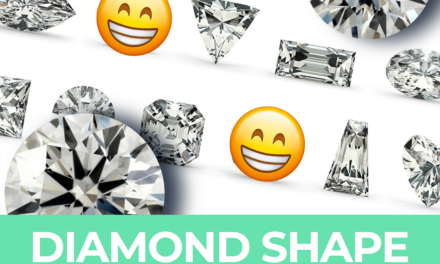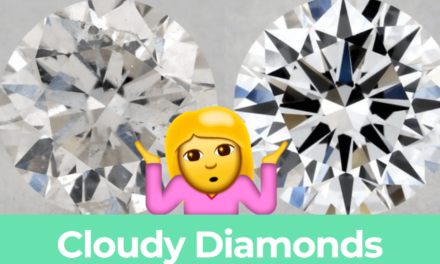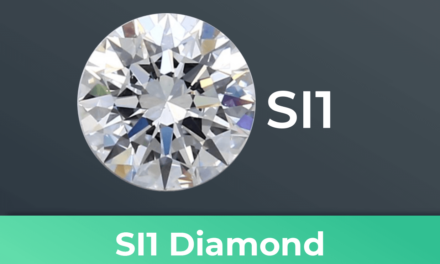My website is reader-supported. Buying through links on my site may result in me earning a CUSTOMER REFERRAL FEE at no extra cost to you.
Check out the latest deals at our top diamond vendor choice: James Allen
The Best and Worst Diamond Alternatives Out There
 Diamond alternatives – prior to World War II, barely 10% of marriage proposals included the bestowing of a diamond engagement ring. Fifty years later, that had shot up to 80%.
Diamond alternatives – prior to World War II, barely 10% of marriage proposals included the bestowing of a diamond engagement ring. Fifty years later, that had shot up to 80%.
The primary driving force for the current demand for diamond engagement rings is the cartel controlling the industry, De Beers. He spent the last 100 years artificially limiting the supply of diamonds. De Beers also created a mythical tradition involving the bestowing of a diamond ring when a couple becomes engaged. The idea that the “right” amount to spend on an engagement ring is two months’ salary? De Beers came up with that too, using it in a 1980s ad campaign.
No one can argue the beauty of a diamond, but they’re not for everyone. Truthfully, there are a number of amazing diamond alternatives to choose from, with most costing far less.
Lab-Grown Diamonds
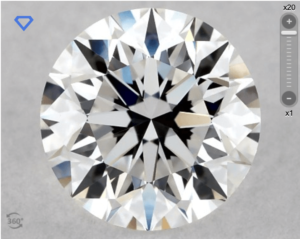 The very best diamond alternative is another diamond, a lab-grown diamond. These diamonds are no different than diamonds mined from the earth in terms of chemical makeup, physical appearance and optical qualities. Furthermore, they’re eco-friendly and if a couple wants to be sure they’re getting an ethically sourced stone, a lab-grown diamond gives them this assurance. Read my in-depth lab-grown diamond guide here.
The very best diamond alternative is another diamond, a lab-grown diamond. These diamonds are no different than diamonds mined from the earth in terms of chemical makeup, physical appearance and optical qualities. Furthermore, they’re eco-friendly and if a couple wants to be sure they’re getting an ethically sourced stone, a lab-grown diamond gives them this assurance. Read my in-depth lab-grown diamond guide here.
Price of a Lab-Grown Diamond
While lab-grown diamonds are fundamentally the same as naturally formed diamonds, the process that takes them from production to display case is somewhat shorter. This is why lab-grown diamonds can cost as much as 40% less than mined diamonds.
Pros of a Lab-Grown Diamond
Lab-grown diamonds have three distinct advantages over diamonds mined from the earth:
- Less expensive
- 100% ethically sourced
- Eco-friendly
Brilliant Earth is the self-proclaimed leader of ethically sourced diamonds, however, James Allen is currently taking over that place with their brand new range of lab grown diamonds.
In addition to that they are just as scrath resistent as the natural diamonds, scoring 10 on the mohs scale. Lab-created diamonds represent the future of the industry because they benefit the buyer as well as the environment. A man-made diamond created in a lab looks identical to a diamond mined from the earth. They are 100% ethically sourced so buyers won’t worry whether they’re getting a “blood diamond” and they’ll pay a fraction of the price.
Moreover, lab-grown diamonds are environmentally friendly as opposed to naturally formed diamonds, they require far less energy compared to what’s used to excavate a diamond mine. A recent study showed that one needs 538.5 million joules of energy per carat to mine diamonds from the earth, while one only needs 250 million to create diamonds in a lab. They are a great choice for an engagement ring.
Cons
Some people cannot accept that lab-grown diamonds are “the same” as “real” diamonds. In my opinion, this is just ignorance and it’s a matter of time before lab grown diamonds become the most popular diamond alternative.
White Sapphire
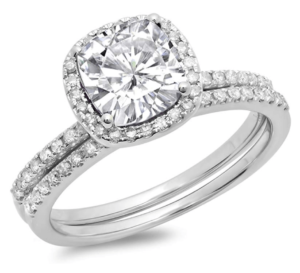 Sapphires are quite durable, measuring 9 on the Mohs Scale, whereas diamonds measure 10, which means sapphires are highly scratch resistant and cannot be easily damaged. Most people buy the colored gemstones as a diamond simulant. But the rarely naturally occuring white sapphire is becoming more popular as a semi precious gemstone alternative to diamonds.
Sapphires are quite durable, measuring 9 on the Mohs Scale, whereas diamonds measure 10, which means sapphires are highly scratch resistant and cannot be easily damaged. Most people buy the colored gemstones as a diamond simulant. But the rarely naturally occuring white sapphire is becoming more popular as a semi precious gemstone alternative to diamonds.
Back in the 18th and 19th Centuries, sapphires were very much in demand, so they were more expansive than diamonds. At that time diamonds were flooding the market, which drove prices up on other stones that are rarer. As the market became more balanced, the price of sapphires came down. White sapphires have since become a common diamond alternative for couples who are looking for something different. Read an in-depth article about white sapphires here.
Price
You will pay about half the price for a white sapphire as you would pay for a blue sapphire and pay approximately 4 to 5 times less than you would pay for a diamond.
Pros
White sapphires have a couple of benefits over diamonds and other diamond alternatives:
- Far less expensive than a diamond
- Quite rare
White sapphires are far less expensive than a diamond of equal size. They’re also very rare. You will not see a lot of others wearing a white sapphire ring.
Cons
Unfortunately, those two things are the only advantages when comparing white sapphires to diamonds. Diamonds are far more durable and scratch-resistant because they’re a lot harder. Furthermore, diamonds are brighter and clearer, which makes them sparkle in the light. In addition to that, white sapphires might not be conflict-free, so you have no idea whether they’ve been ethically sourced or not. When you buy a lab-grown diamond you know that it’s not a blood diamond.
Moissanite
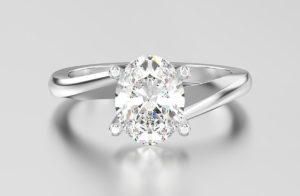 Diamonds result when carbon, deep in the earth or in a lab, is put under high pressure and high heat, whereas moissanite consist of silicon carbide.
Diamonds result when carbon, deep in the earth or in a lab, is put under high pressure and high heat, whereas moissanite consist of silicon carbide.
Henri Moissan, a French scientist, discovered this diamond alternative more than a century ago. He thought he’d discovered diamonds inside a meteor that had fallen from space, but these turned out to be silicon carbide crystals instead.
But since meteors fall to earth quite randomly, moissanite is exceedingly rare. Therefore, most of the moissanite gems you see today are man-made in a lab. Read an in-depth article about moissanite here.
Price
There is no comparison in price between moissanite gems and diamonds. Generally speaking, the size and color of moissanite gems determine their price. A 1-carat moissanite stone will vary in price from $250 to $600.
Pros
Moissanite gems have three distinct advantages:
- Less expensive than diamonds
- Nearly as durable as diamonds
- Many people love their extreme sparkle and brilliance; others don’t
- They are almost scoring 9.5 on the mohs scale
One of the main advantages of moissanite gems are how durable they are. Diamonds are the hardest mineral on earth, with a 10 on the Mohs Scale of Hardness. Moissanites measure 9.5, which means they rarely scratch or show wear and tear.
Cons
The sparkle on moissanite stones is extremely bright, and some people avoid them for this reason. The refractive index on moissanite is 2.65 to 2.60, whereas diamonds have a 2.42. The sparkle, brilliance, and fire on moissanite gems can be overwhelming to some.
Cubic Zirconia
Cubic zirconia stones are also predominately created in a lab, because just like moissanite, they are rarely found in nature. They consist of a crystalized form of zirconium dioxide, and they too are a less expensive diamond alternative.
Price
Cubic zirconia are the least expensive diamond alternative, commonly priced from $30 to $200, depending on the size of the stone.
Pros
The only real advantage cubic zirconia has over other diamond alternatives is that they may be the only option for people on an extremely tight budget.
Cons
Cubic zirconia does have several distinct disadvantages over other diamond alternatives:
- Scratch easily and can look cloudy after a while Reflect a lot of colored light, causing a “rainbow effect”
- No real sparkle or brilliance
- Has none of the characteristics of a diamond
Cubic zirconia only measures 8.5 on the Mohs Scale, which means they lack durability. This makes them susceptible to scratching and looking cloudy over time. Because they disperse light at a relatively high rate, they have no visual brilliance and no real sparkle. Instead, they reflect a lot of colored light, which results in a “rainbow effect.”
Conclusion – Diamond Alternatives
Overall, there are a couple of great diamond alternatives that don’t empty your wallet as much as a naturally occuring diamond would do. Whether you are looking for a diamodn simultant to mount on a rose gold setting or a white gold setting, I strongly recommend to consider lab grown diamond as they are 100% conflict free and the closest thing to naturally coccuring diamonds.

